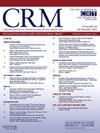Manual compression hemostasis using a hemostatic pad for the distal radial artery approach
IF 1.6
Q3 CARDIAC & CARDIOVASCULAR SYSTEMS
引用次数: 0
Abstract
Background
The method of hemostasis for the distal radial approach has not been standardized, although this approach has become increasingly popular due to its advantages. In this study, we investigated the feasibility of manual compression hemostasis using a calcium alginate pad after coronary angiography via the distal radial approach.
Methods
We retrospectively collected 150 consecutive patients (mean age, 74.9 ± 8.0 years; male, 75 %) who underwent coronary angiography via the distal radial artery with a predominantly 4 Fr sheath from April 2021 to December 2022 and were hemostatic according to the following methods. After sheath removal, hemostasis was achieved by manual compression for 10 min using a hemostatic pad containing calcium alginate. When hemostasis was confirmed, a small log-shaped gauze was placed over the pad and fixed using a self-adhesive elastic bandage for 2 h. All procedures were performed by four fellows just beginning the distal radial approach.
Results
The mean compression time was 12.4 ± 4.8 min, and hemostasis was successfully achieved in all patients, allowing the release of the elastic bandage after 2 h, with only one patient oozing the next morning. There were no major complications, while one patient had a >10 cm hematoma. Compared to that of the first 15 patients, for each fellow, the compression time of the subsequent patients was significantly shorter (14.5 ± 6.7 vs 11.1 ± 2.1 min, p < 0.01).
Conclusions
Manual compression hemostasis using calcium alginate pads for the distal radial artery approach appears feasible with a simple learning.

桡动脉远端入路使用止血垫进行人工压迫止血
本文章由计算机程序翻译,如有差异,请以英文原文为准。
求助全文
约1分钟内获得全文
求助全文
来源期刊

Cardiovascular Revascularization Medicine
CARDIAC & CARDIOVASCULAR SYSTEMS-
CiteScore
3.30
自引率
5.90%
发文量
687
审稿时长
36 days
期刊介绍:
Cardiovascular Revascularization Medicine (CRM) is an international and multidisciplinary journal that publishes original laboratory and clinical investigations related to revascularization therapies in cardiovascular medicine. Cardiovascular Revascularization Medicine publishes articles related to preclinical work and molecular interventions, including angiogenesis, cell therapy, pharmacological interventions, restenosis management, and prevention, including experiments conducted in human subjects, in laboratory animals, and in vitro. Specific areas of interest include percutaneous angioplasty in coronary and peripheral arteries, intervention in structural heart disease, cardiovascular surgery, etc.
 求助内容:
求助内容: 应助结果提醒方式:
应助结果提醒方式:


